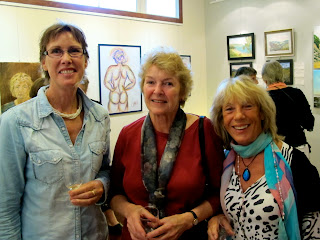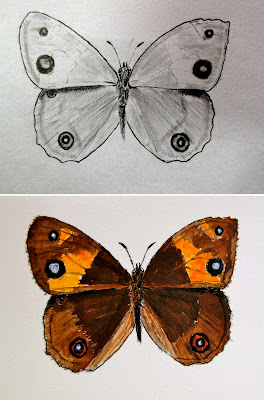Monday, December 12, 2011
Wednesday, November 9, 2011
Workshop. 12.11.2011
Dear friends,
I have considered some of the comments I have heard from the members of the group on various occasions, and decided to have a still life for our next workshop on Saturday the 12th of November.
We will look at some principles of selecting colours/colour schemes for compositions. These rules apply not only to the still lives but in general to all paintings (if they are colour oriented - there are some other things which help to unite the image, but we will leave it out for now).
Jan, we won't have a tree, of course, but the same principles apply to all fluffy objects, and we will have some flowers, so you will have a chance to practice painting uneven shapes with very uneven surface.
WHAT IS NEEDED
Bring the medium you would like to use. Oil and pastel are the most efficient. Water-colour may need some time to dry - so consider a time aspect. Using dry water-colour techniques (the same as you used in Leonie's workshop) won't produce a problem of drying, but it will look very boring. That painting style does not have many artistic qualities.
Bring all materials for the painting medium of your choice.
I will provide the props, but I will be grateful for any contribution: plain coloured fruits and vegetables of simple shapes, non-transparent objects of plain colour and simple shapes without too many details on them, artificial flowers (dahlias and asters especially for Jan Petroff, please) — or long lasting live flowers.
I will set up a couple of compositions to show the principles of colour combinations.
See you on Saturday!
I have considered some of the comments I have heard from the members of the group on various occasions, and decided to have a still life for our next workshop on Saturday the 12th of November.
We will look at some principles of selecting colours/colour schemes for compositions. These rules apply not only to the still lives but in general to all paintings (if they are colour oriented - there are some other things which help to unite the image, but we will leave it out for now).
Jan, we won't have a tree, of course, but the same principles apply to all fluffy objects, and we will have some flowers, so you will have a chance to practice painting uneven shapes with very uneven surface.
WHAT IS NEEDED
Bring the medium you would like to use. Oil and pastel are the most efficient. Water-colour may need some time to dry - so consider a time aspect. Using dry water-colour techniques (the same as you used in Leonie's workshop) won't produce a problem of drying, but it will look very boring. That painting style does not have many artistic qualities.
Bring all materials for the painting medium of your choice.
I will provide the props, but I will be grateful for any contribution: plain coloured fruits and vegetables of simple shapes, non-transparent objects of plain colour and simple shapes without too many details on them, artificial flowers (dahlias and asters especially for Jan Petroff, please) — or long lasting live flowers.
I will set up a couple of compositions to show the principles of colour combinations.
See you on Saturday!
Sunday, October 9, 2011
Natural History workshop. October 2011
Workshop with Lindsay Hunt. October 2011
Friday, July 15, 2011
Landscape. Workshop in Modanville, July, 2011.

oil on canvas

acrylic on canvas

Jan Petroff, oil ob canvas




oil on canvas


Tatiana Efremova, oil on canvas
Rene Bolten workshop. 9.07.2011

Rene Bolten and John Temple-Watts

Marie Matthews

Tatiana Efremova

Trying to measure immeasurable...

Jan Petroff, Sue Nunn and John Temple-Watts

Ros Little, Marianne Trent and Marie Matthews
Subscribe to:
Comments (Atom)





































